Having introduced the [Diskokugel] project at Berlins biweekly [puredata] [user group], I was asked to build an installation for the finalizing event in Berlins [LEAP] gallery. Being busy doing technical coordination for the [Über Lebenskunst Festival] this was quite a task.
I used the five prototype circuits to build a walk-in sphere of 40 speakers. The speakers were attached to nylon strings stretched from the ceiling to the ground, so you could bend them aside to step in. In an effort I provided a crude interface in PD that provided a joypad for people inside the sphere to select different programs, such a random, sound going in circles, etc.
Contentwise, we had placed a call for content, which resulted in one piece that was handed to me and which worked quite well. I have yet to get the adress of the composer to thank him again ;)
The result was quite to my liking and so was the feedback (apart from nobody understanding the interface, but in the end that didn’t matter much). The sphere was fun to use. I personally found it pretty dizzying standing inside the speakers while the sound came from a different direction every 25 milliseconds. Unfortunately, as of now there are no pictures to show. The installation stood at LEAP only for two days, in which I had forgotten to bring my camera. Hopefully I will find someone of the PDCON who made good ones.
[UPDATE: pictures of the building process and a picture from a mobile phone (thanks ckp and astring!)]

a picture by astring

in action. the nylon-strings could be bent apart to step inside. (pic by ckp)
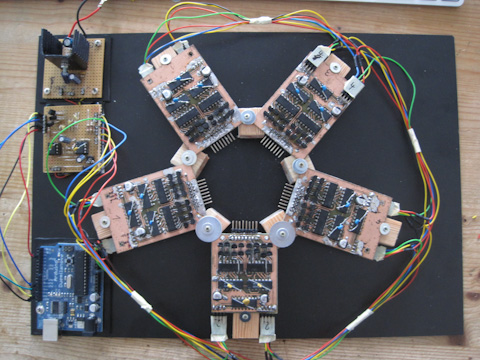
arrangement of the circuits
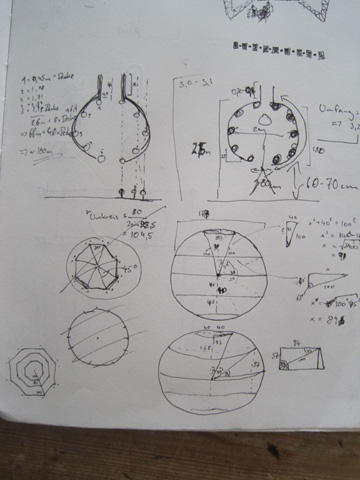
some notes
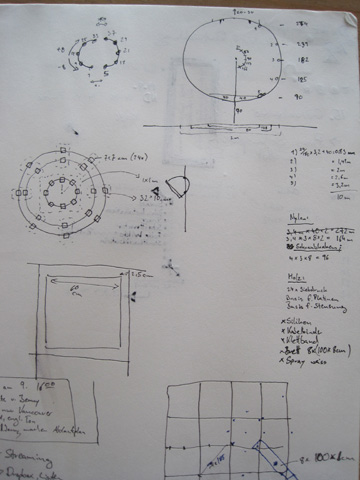
more notes

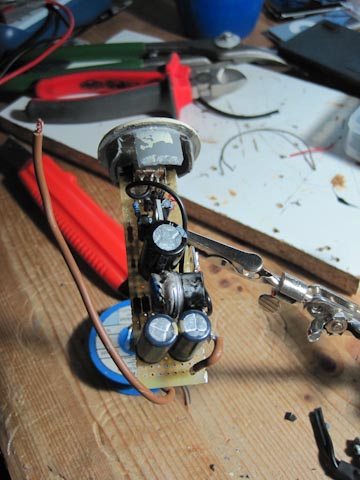



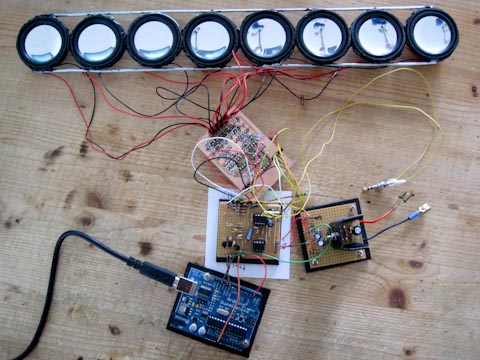




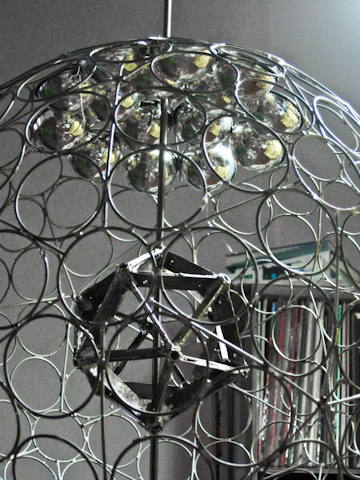

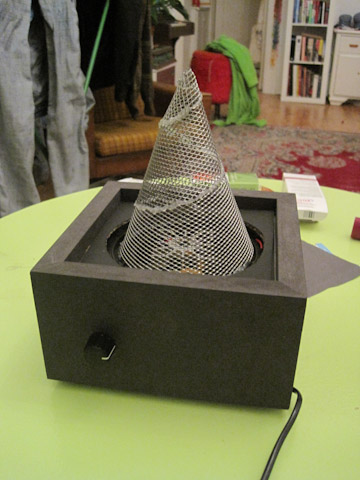
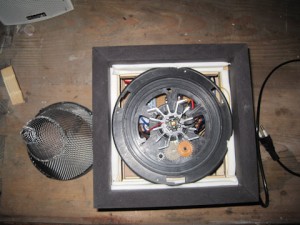
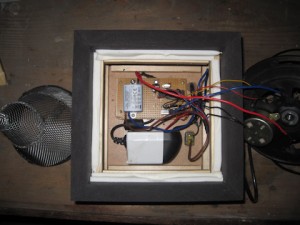
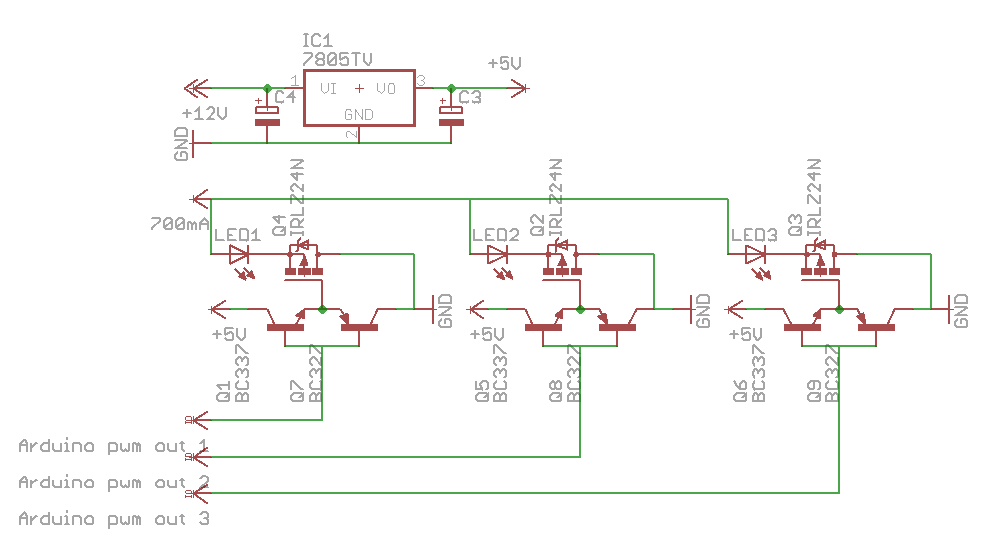 Of course, the Atmega32-8 is completely oversized for such a project, but it was at hand and programmable via the Arduino. I’m sure the extra constant current supply is also obsolete, but I didn’t get to try otherwise. Comments how to optimize the setup are always appreciated.
Of course, the Atmega32-8 is completely oversized for such a project, but it was at hand and programmable via the Arduino. I’m sure the extra constant current supply is also obsolete, but I didn’t get to try otherwise. Comments how to optimize the setup are always appreciated.